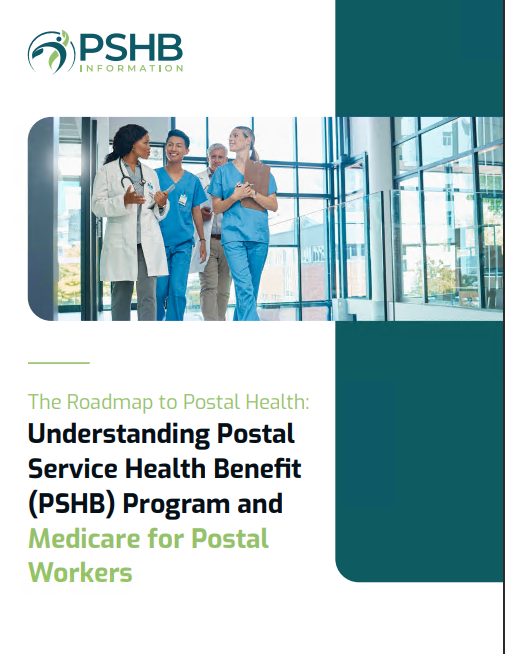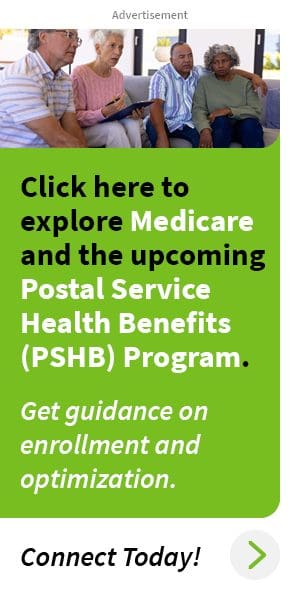Key Takeaways
-
Missing PSHB enrollment deadlines can leave you without coverage, so mark your calendar and prepare ahead of time.
-
Understanding the transition from FEHB to PSHB helps you avoid last-minute surprises and coverage gaps.
Why Deadlines Matter More Than Ever
The transition to the Postal Service Health Benefits (PSHB) Program is officially here in 2025, and missing important deadlines can cost you your coverage. Whether you’re a current USPS employee or a retiree, you need to understand these critical dates and how to prepare in advance.
Enrollment periods are time-sensitive, and if you don’t take action within the right window, you could face coverage gaps, delays, or even higher costs. The shift from the Federal Employees Health Benefits (FEHB) Program to PSHB means this year’s Open Season is different from what you may be used to. Not being aware of the changes can lead to unwanted complications, so staying informed is essential.
The PSHB Enrollment Timeline You Must Follow
To ensure seamless health coverage, here’s what you need to know about the key PSHB enrollment periods:
-
Annual Open Season (November–December 2025):
-
This is your chance to enroll in, change, or cancel your PSHB plan.
-
If you miss this window, you’ll have to wait until the next Open Season unless you qualify for a Special Enrollment Period.
-
Enrolling early ensures you avoid delays in coverage.
-
-
Automatic Enrollment for Current FEHB Enrollees:
-
If you’re already in an FEHB plan and don’t make a selection, you’ll be automatically transferred to a corresponding PSHB plan.
-
However, automatic enrollment may not always be the best fit—review your plan options carefully to ensure you get the coverage that meets your needs.
-
Some enrollees may be surprised by changes in coverage details, so a thorough review is necessary.
-
-
Special Enrollment Periods (SEPs):
-
SEPs allow enrollment changes outside Open Season if you experience qualifying life events, such as retirement, marriage, divorce, or loss of coverage.
-
The timeframe for making changes depends on the event, typically ranging from 30 to 60 days.
-
If you don’t act within the SEP timeframe, you may be locked out of coverage changes until the next Open Season.
-
-
Medicare-Eligible Annuitants Must Act:
-
If you retired before January 1, 2025, you are not required to enroll in Medicare Part B.
-
If you retire on or after January 1, 2025, you may need to enroll in Medicare Part B to maintain PSHB coverage.
-
Some PSHB plans may offer premium reimbursements or lower out-of-pocket costs for enrollees with Medicare Part B.
-
Understanding these changes can help you make a more informed decision about your retirement healthcare strategy.
-
Preparing for Open Season: What You Should Do Now
1. Mark Your Calendar for Open Season
The Open Season for PSHB happens every year from November to December, but don’t wait until the last minute. Set reminders to review your options at least a few months in advance to avoid any last-minute rush or oversight.
2. Review Your Current Coverage
-
Check your existing FEHB plan and compare it to available PSHB options.
-
Look at premiums, deductibles, copayments, and out-of-pocket limits to see what works best for your needs.
-
Ensure that your new PSHB plan offers comparable or improved benefits compared to what you currently have.
3. Understand Medicare Requirements
-
If you’re close to retirement or already a retiree, find out if you need to enroll in Medicare Part B.
-
Check whether your preferred PSHB plan offers benefits for Medicare-eligible enrollees.
-
Delaying Medicare enrollment when required could result in penalties, so be sure to review your situation carefully.
4. Consider Future Health Needs
-
Are you managing a chronic condition? Look for a plan with strong prescription and specialist coverage.
-
Do you expect higher healthcare costs in the next few years? Compare coinsurance, deductibles, and out-of-pocket maximums.
-
Understanding how your healthcare needs may change over time will help you make a better long-term decision.
5. Confirm Dependent Eligibility
-
Ensure your spouse and dependents qualify for coverage under your selected PSHB plan.
-
Check if a family member is aging out of dependent coverage.
-
Some plans have different rules regarding dependents, so reviewing these details early can prevent surprises.
What Happens If You Miss the Deadline?
Failing to act before the Open Season deadline can result in serious consequences:
-
No Coverage: If you aren’t automatically enrolled in a PSHB plan and don’t take action, you could lose your health benefits.
-
Limited Changes: Outside Open Season, you can only make changes if you experience a qualifying life event.
-
Higher Costs: Delayed enrollment could lead to increased out-of-pocket expenses, especially if you miss a required Medicare Part B enrollment period.
-
Coverage Gaps: If you rely on automatic enrollment but find out later that your plan doesn’t meet your needs, you’ll have to wait until the next Open Season to make adjustments.
Making the Right Plan Choice
Choosing a PSHB plan isn’t just about finding the lowest premium. Consider these factors:
-
Provider Networks: Ensure your preferred doctors and hospitals are covered.
-
Prescription Drug Coverage: Look at the formulary to confirm your medications are included.
-
Extra Benefits: Some plans offer additional perks like wellness programs, telehealth services, and dental or vision benefits.
-
Long-Term Cost Considerations: A plan that seems affordable now may have higher out-of-pocket costs over time.
Planning for Retirement? Here’s What to Know
If you’re approaching retirement, PSHB enrollment rules may differ for you. Here’s what to keep in mind:
-
If you retire after January 1, 2025, you may need to enroll in Medicare Part B to keep PSHB coverage.
-
If you retire before January 1, 2025, you are not required to enroll in Medicare Part B but may still choose to do so.
-
Many PSHB plans coordinate benefits with Medicare, potentially lowering out-of-pocket costs.
-
If you plan to retire within the next five years, it’s a good idea to start reviewing your options now to make sure you transition smoothly.
Ready for Open Season? Take Action Now
Preparation is key to making the most of your PSHB benefits. By understanding the enrollment process and deadlines, you can secure the best coverage without the stress of last-minute decisions.
For expert guidance on your PSHB options and to ensure you’re making the right choices, reach out to a licensed agent listed on this website today.






